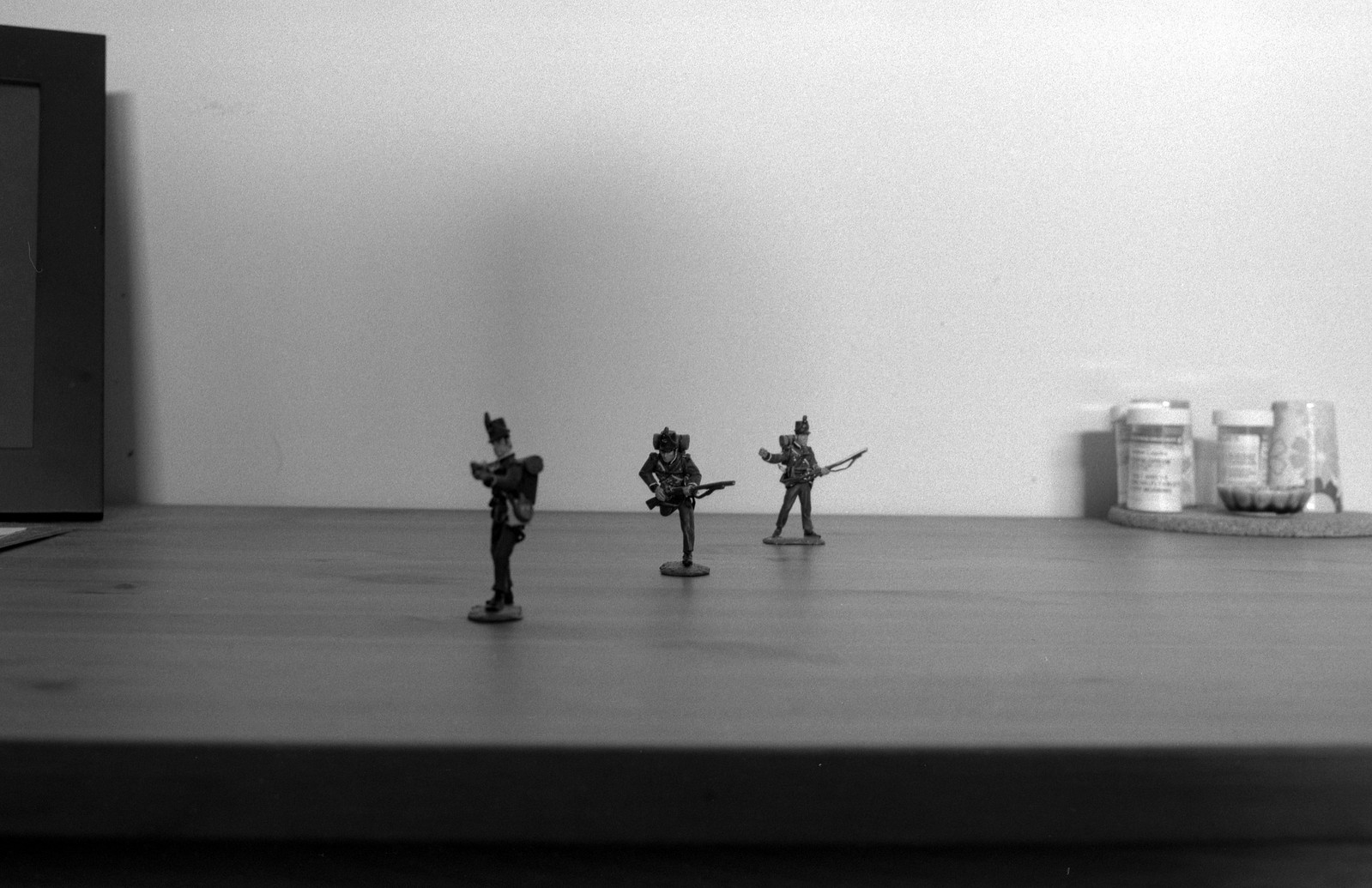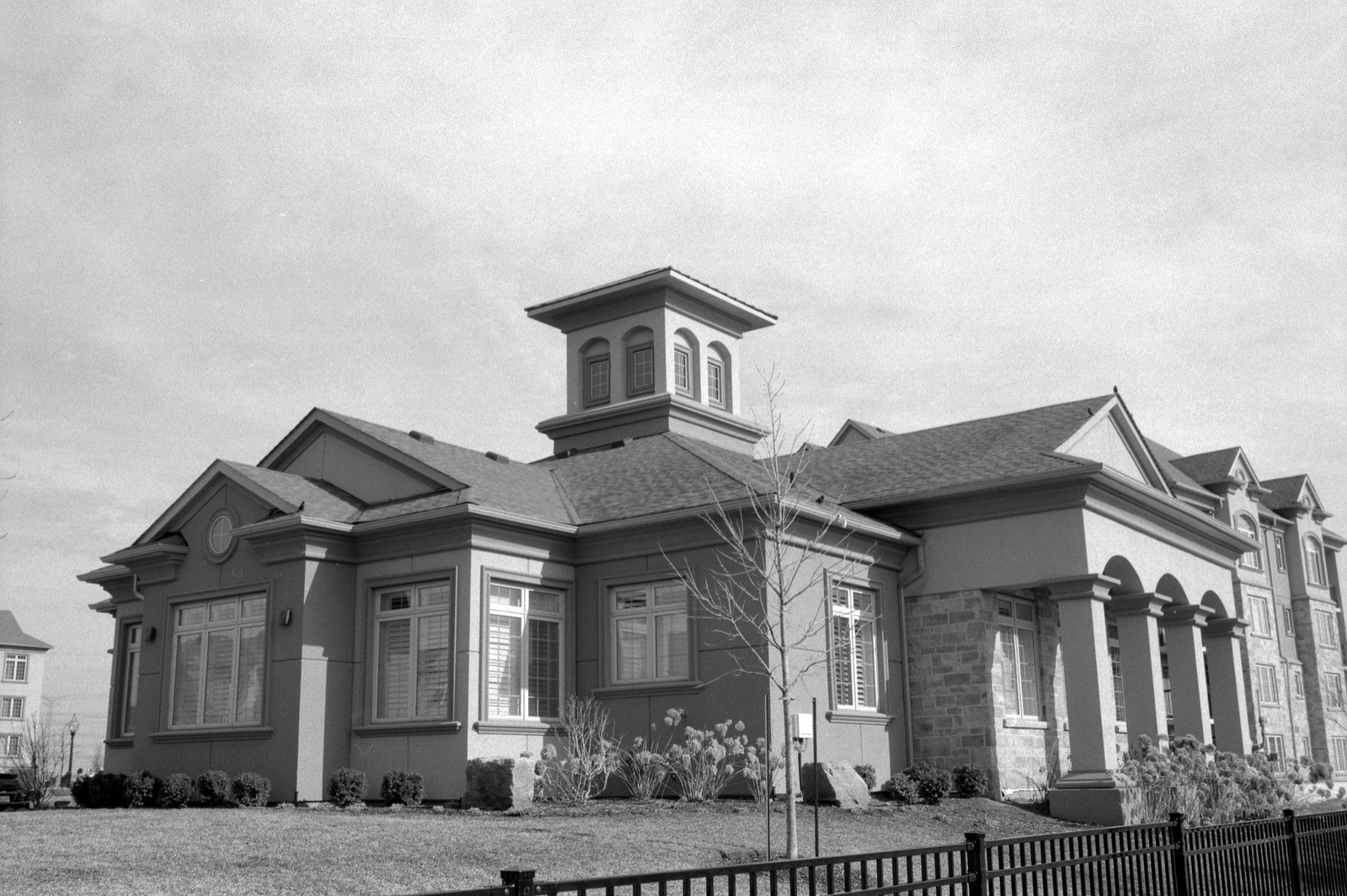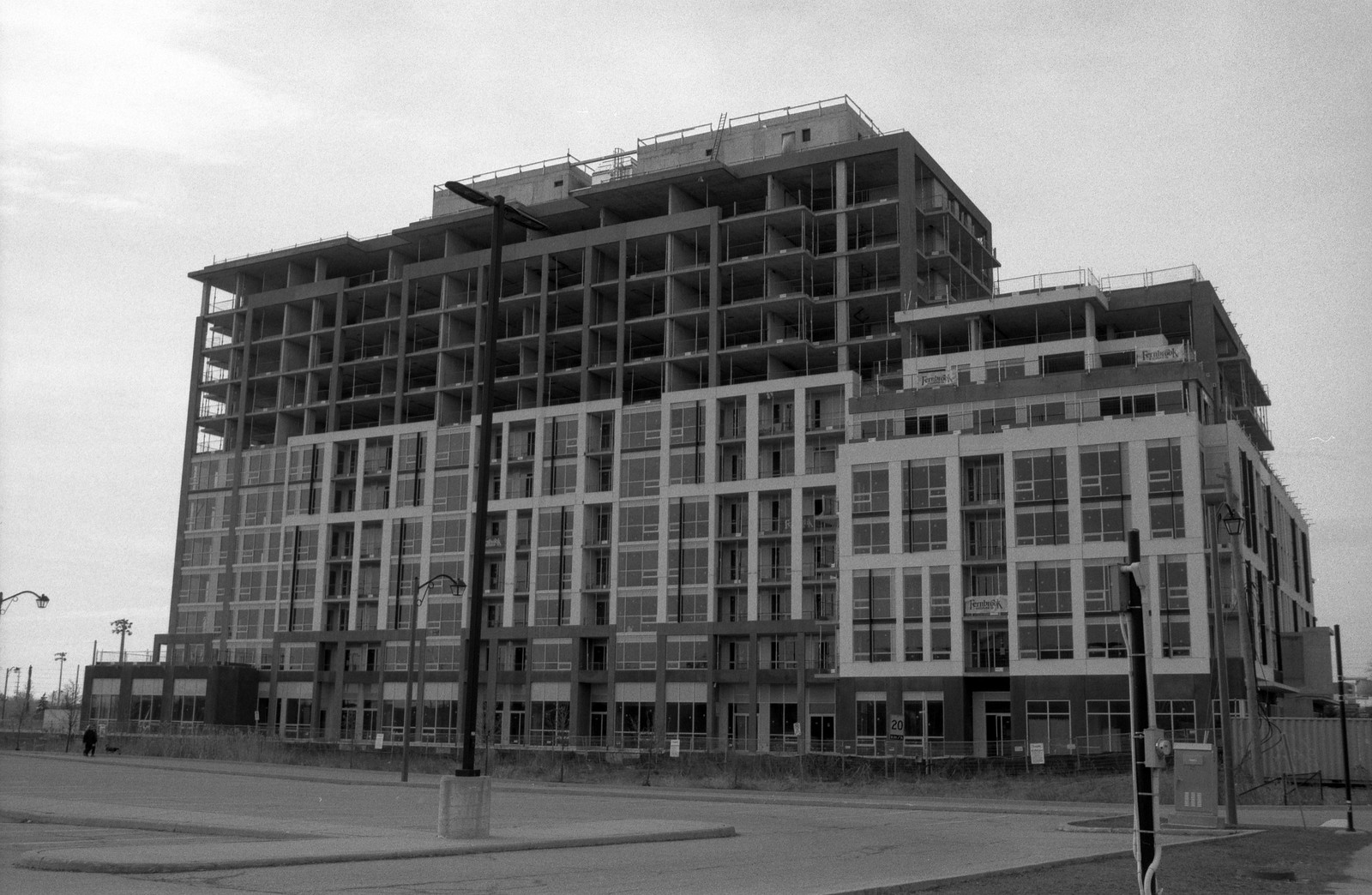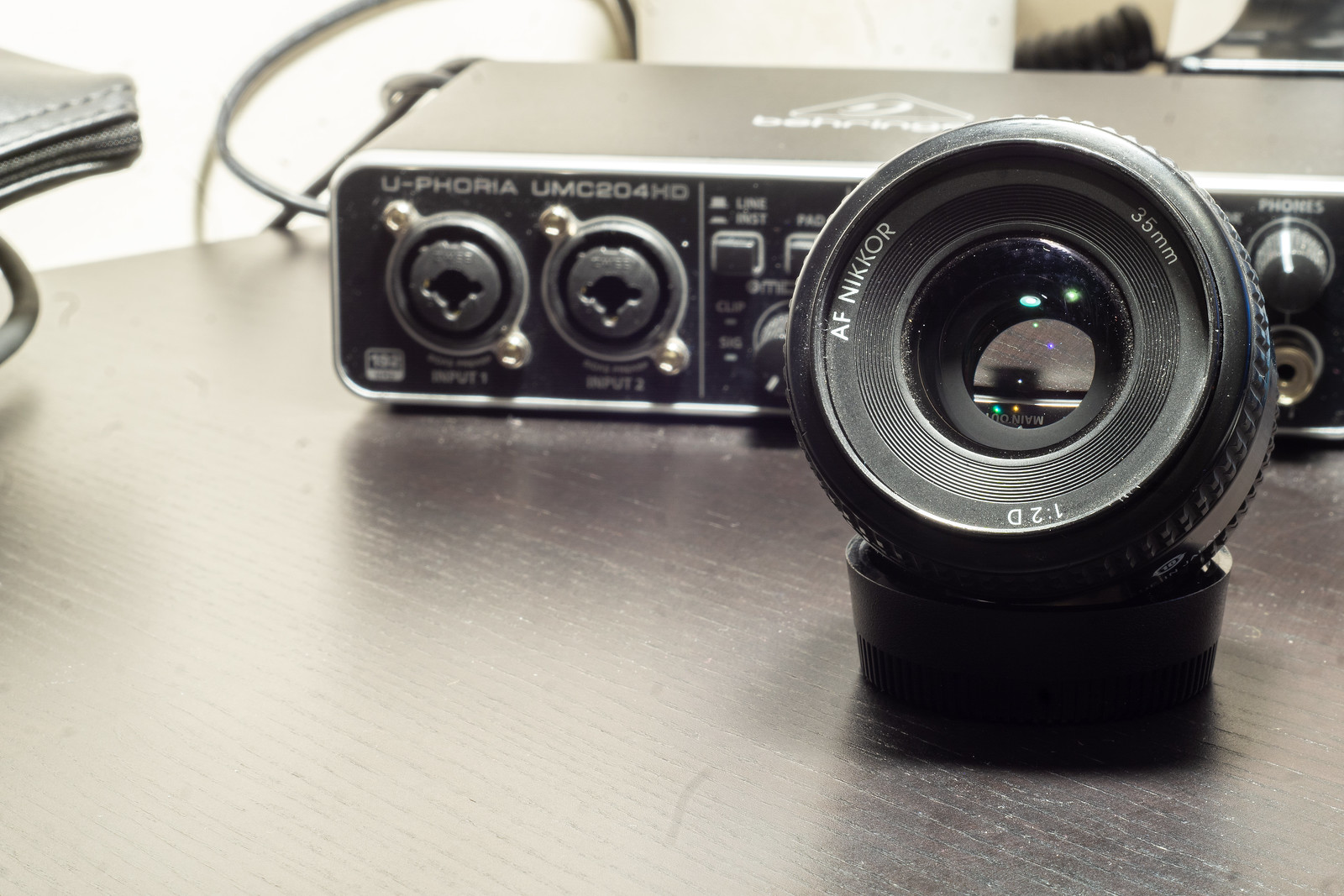In the automotive world, especially in the world of hotrods, there’s a term ‘sleeper’. A sleeper is a car that doesn’t look like a performance automobile, but under the hood is. For many years my dad babied a 1983 Caprice Classic, installed a new engine, new exhaust, fuel injector, all to complement the Impala SS suspension and close-ratio police steer box that came with the car. The Caprice spent many years as a sleeper until he started working on some exterior detailing. Why do I mention a car on a lens review? Well, it’s because the lens I’m covering today is a sleeper, it doesn’t look like much, but the Nikkor 35/2D is one of the best Nikon lenses I’ve ever worked with, and it has survived three previous cameras, and I haven’t had any need to replace the lens.
Lens Specifications
Make: Nikon
Model: AF Nikkor 35mm 1:2D
Focal Length: 35mm
Focal Range: ∞ – 0.25m
Aperture: f/2 – f/22, 7 Blades
Structure: 6 Elements in 5 Groups

Nikon F5 – AF Nikkor 35mm 1:2D – Kodak TMax 100 @ ASA-100 – Kodak TMax Developer (1+4) 7:30 @ 20C
Build Quality
Don’t let the plastic body worry you about the 35/2D. Most modern AF lenses from Nikon are made with an exterior plastic shell, the metal is where it counts, the internals and the lens mount itself. If you’re thinking to compare this to the manual focus versions of the lens, don’t, the two are completely different in the optical build category. When Nikon released the first autofocus version in 1989, they changed the formula. What makes this lens nice is that it doesn’t add too much weight onto the front of any camera, but is not too light either. I have been running with this same lens since the early 2000s when I got it with my Nikon F80, and it served well across the F80, D70s, D300, and now the F5 and until recently the F90. The one thing you do have to look out for is lens flare with the front element close to the front of the lens barrel itself. Thankfully I have a couple of old-school metal lens hoods that help reduce the flare. Also, these take 52mm filters, so they work across most short primes in the Nikon collection. Being a D-Type lens the 35mm f/2D retains a proper aperture ring; you just have to lock it to f/22 when working with a modern camera to allow automatic functions. Thankfully there’s a physical locking switch to keep it stopped down to f/22, of course on older Nikon cameras you need to unlock it to prevent damage.

Nikon F5 – AF Nikkor 35mm 1:2D – Kodak TMax 100 @ ASA-100 – Kodak TMax Developer (1+4) 7:30 @ 20C
Nikon F5 – AF Nikkor 35mm 1:2D – Kodak TMax 100 @ ASA-100 – Kodak TMax Developer (1+4) 7:30 @ 20C
Nikon F5 – AF Nikkor 35mm 1:2D – Kodak TMax 100 @ ASA-100 – Kodak TMax Developer (1+4) 7:30 @ 20C
Nikon F5 – AF Nikkor 35mm 1:2D – Kodak TMax 100 @ ASA-100 – Kodak TMax Developer (1+4) 7:30 @ 20C
Image Quality
Honestly, there’s nothing that bad quality-wise about the lens. There is some distortion of your straight lines along at closer focus, but nothing too serious. Probably the best part of the lens is the complete lack of corner fall-off at the edges even wide open at f/2. The out-of-focus elements are smooth, nothing special or unique. But that perfectly outlines the details of the lens, just performance, nothing special. When you start to stop the lens down, you get perfectly sharp images edge-to-edge, and it starts to sing by the f/8 range up to f/22. The only trouble that I see with the quality is the perchance for lens flare. Thankfully, Nikon released a lovely metal lens hood with older manual focus lenses and I happen to have two on hand which rarely leaves the lens, and then only to attach a filter.





Applications
For a general, everyday carry, no need for theatrics lens, the 35mm f/2D is the lens you want for your autofocus Nikon lens kit. Rarely does this lens leave my F5 these days! It is the perfect in-between if you don’t want things to be too wide (28mm) or too narrow (50mm) then your 35mm lens is the perfect fit. As a travel lens, it adds little to the weight of your camera or even camera bag, and with an f/2 wide open aperture, it does a decent job in low light also. I would say this lens give you closer to what you see in your regular field of version than the 50mm does. It also handles landscape, architecture, environment portraits, and spontaneous portraits. This lens is truly the jack of all trades for your Nikon AF system. And it can master every normal task with ease. You can use the 35mm f/2D on almost every Nikon camera there a few caveats to that statement. As a D-Type lens, it does rely on an in-body autofocus driver motor and has a direct mechanical link. On some consumer-grade cameras, the lens won’t autofocus. It also won’t autofocus on manual focus cameras. But it will mount on most manual focus cameras as a D-Type lens, it also meets the AI-S standard, and since it has an aperture ring, you can use it easily. You’ll run into trouble with only the oldest Nikon SLR bodies, cameras produced before the Nikon F2AS, also any cameras that require the use of a physical aperture coupling claw. But I’ve used this lens on a Nikon FM2n and Nikon F3 without any trouble, and it even mounts fine on my a6000 with an adapter.





The Low Down
Once more for the people who are still on the fence, if you run an autofocus Nikon body, you need this lens in your kit. I would say get this lens first and then build from there. Despite being released over a decade ago, you can still pick these up brand new. Sadly new they aren’t cheap, but you could also find them on the used market, but always double-check before buying. But also think about the cameras you’ll be running this lens on, if you are doing work on a DX camera, consider the newer AF-S 35mm f/1.8G, but if you’re doing most of your work on older models, then stick with this lens. I would go as far as to say if your camera can support this lens, go for it, as a full-frame lens it gives you a bit of future-proofing and backwards compatibility. Which, when it comes to cameras these days is saying a lot and something that many new cameras and lenses don’t have these days. Just get the lens, you’ll thank me later.
Further Reading
Don’t just take my work on the Nikkor 35mm f/2D, check out these other reviews.
Ken Rockwell – AF Nikkor 35mm 1:2D Review
Oleg Novikov Photography – AF Nikkor 35mm 1:2D Review
Compose Click – AF Nikkor 35mm 1:2D Review: The most underrated Nikon?
Optical Limits – AF Nikkor 35mm 1:2D Review

1 Comment